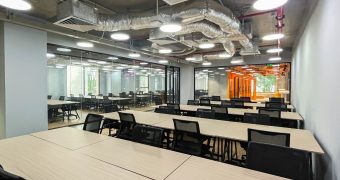What is a Conference Room? Does Your Business Need One?
In the world of business and professional interactions, choosing the right space can make a significant difference in the success of a meeting or event. Are you planning to host a gathering with important clientele or map out your company’s next big move? If so, you have likely encountered the terms “conference room” and “meeting room”. These spaces are designed for brainstorming sessions, presentations, negotiations, and decision-making within the corporate landscape.
Understanding the distinctions between these areas is valuable for seasoned professionals and budding entrepreneurs alike. This article will explore the nuances of conference rooms and meeting rooms, highlighting their definitions, purposes, and differences. Let’s dive in to uncover the details of conference and meeting rooms and help you select the right setting for your next important gathering.
What is a Conference Room?
A conference room is a designated area within an office or a separate facility explicitly designed to host formal meetings, presentations, and large-scale discussions. These spaces are purpose-built to facilitate significant business events. They exude professionalism and are ideally suited for executive meetings, board gatherings, and high-stakes decision-making.
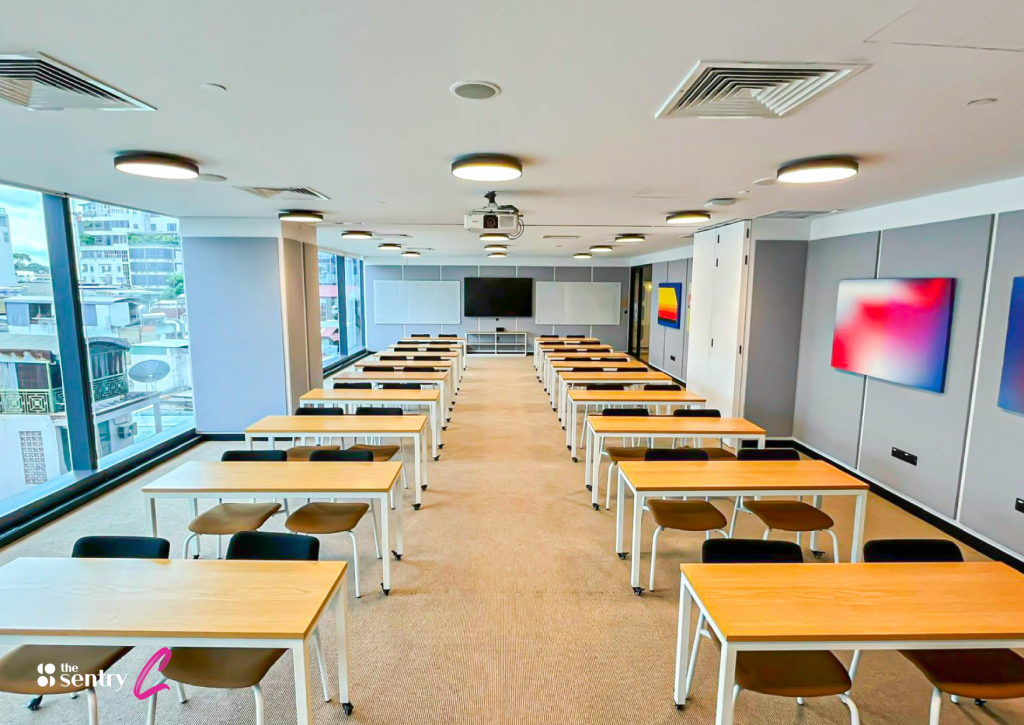
Typically furnished with a long conference table and comfortable executive chairs, these rooms often feature advanced audio-visual equipment to support clear presentations and group discussions. The entire environment is constructed to project an image of seriousness and competence, making it the go-to choice for occasions where making a strong impression matters.
What Does a Conference Room Have
Not all conference rooms are identical, but several general characteristics define them. These features are what set them apart from other spaces in an office.
Size and Capacity
A conference room is generally larger than other rooms in an office. Its size can vary, but it is built to accommodate a significant number of attendees, often ranging from ten to fifty people or even more. The capacity depends on the layout of the room, and this factor often plays into the cost of building or renting one. The generous space ensures that participants are not cramped and can focus comfortably on the proceedings.
Technology
A hallmark of a traditional conference room is its range of advanced technology that helps make work productive. Audio-visual equipment is standard, including large high-definition screens or projectors, video conferencing systems with high-quality cameras and microphones, and integrated sound systems. This technology enables seamless communication and professional presentations, whether participants are in the room or joining remotely from anywhere in the world.
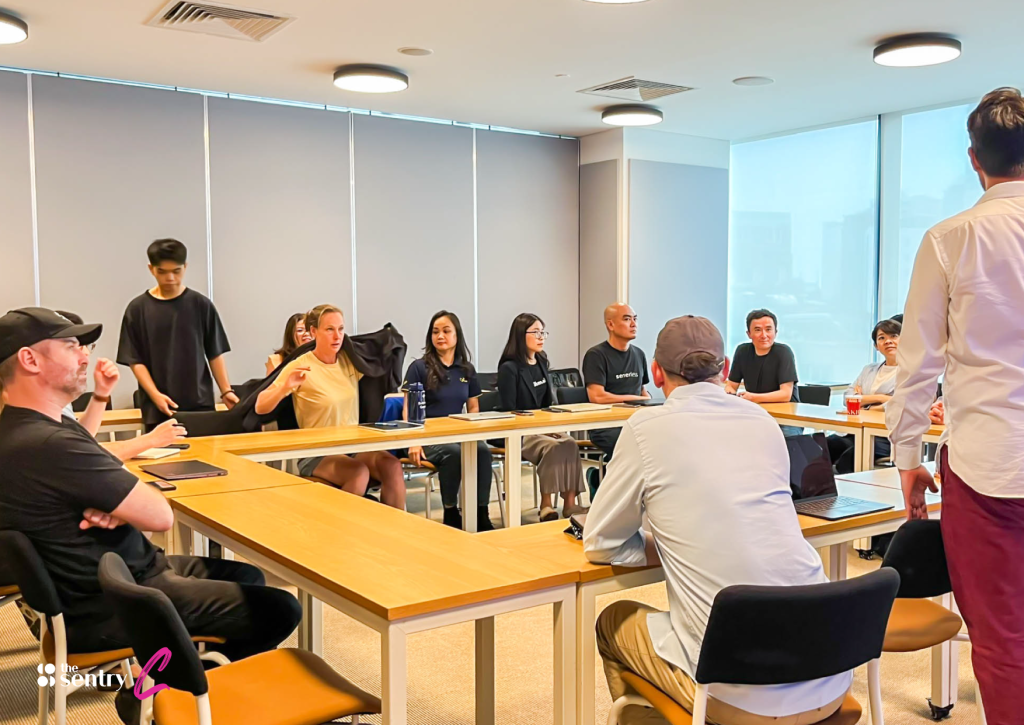
Privacy and Acoustics
Confidential discussions and private meetings are frequently held in conference rooms. For this reason, their construction pays close attention to acoustics. Walls are often soundproofed to minimize noise interference from external sources and to ensure that sensitive conversations remain within the room. This focus on privacy is a major component of what makes these rooms suitable for legal, financial, and strategic discussions.
Furniture
Comfortable and professional furniture is standard in every conference room. This usually includes a large, central table, often made of premium materials like wood or glass, surrounded by ergonomic chairs designed for long periods of sitting. Additional furnishings, such as credenzas for serving refreshments or lecterns for speakers, can be included based on the meeting’s purpose.
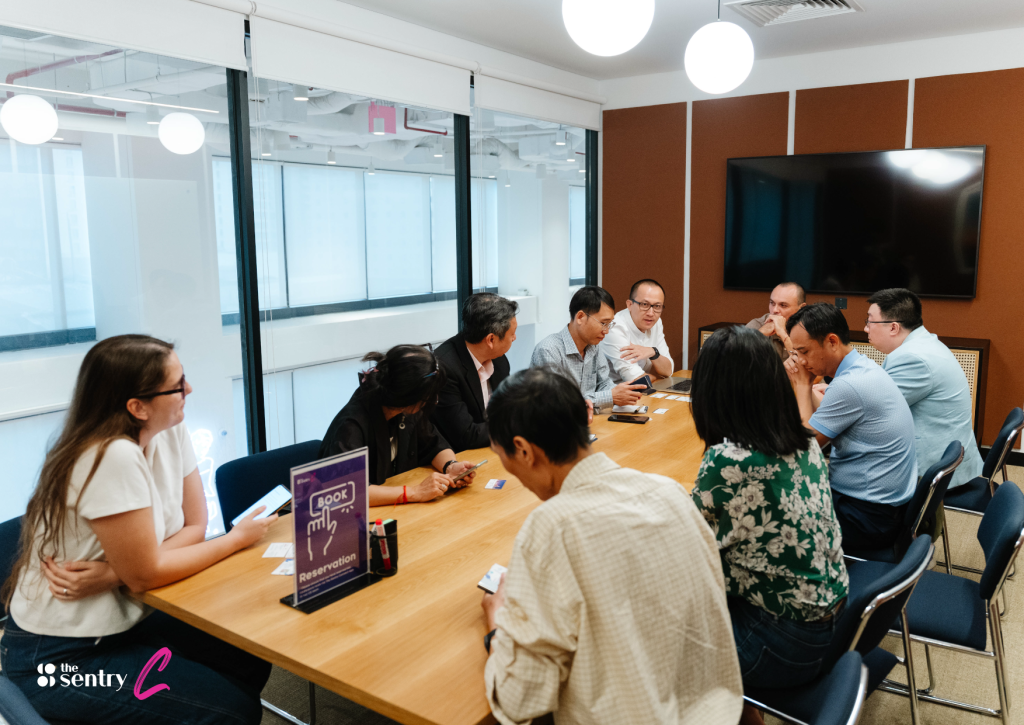
Lighting
Proper lighting is another feature of a well-designed conference room. Most will have adjustable lighting options to cater to different meeting requirements. For example, the lights might be brightened for an active discussion or dimmed for a video presentation. Many modern conference rooms also incorporate natural light to create a more pleasant and energizing atmosphere
The Difference Between a Meeting Room and a Conference Room
People often use the terms “meeting room” and “conference room” interchangeably. While they share the common purpose of providing a space for discussion, there are distinct differences between them. Understanding these differences can help you select the most appropriate venue for your event.
| Meeting Room | Conference Room | |
| Capacity | Smaller, typically designed for 3-15 people. | Larger, built to accommodate bigger groups, often up to 50 or more. |
| Room Layout | Flexible and easily rearranged seating to suit various discussion types. | More fixed and formal, often centered around a large, stationary table. |
| Best For | • Team huddles • Brainstorming sessions • One-on-one conversations • Small, collaborative group work |
• Board meetings • Formal client presentations • Seminars & training workshops • Company-wide announcements |
| Atmosphere | Informal and relaxed, designed to encourage open participation and sharing of ideas. | Formal, professional, and serious, designed to impress and facilitate important decisions. |
| Furnishings | Functional and pleasant, but typically less stately or imposing. | Often features elegant, high-quality furnishings like solid wood tables and leather chairs. |
| Technology | Generally equipped with the basics like Wi-Fi and a whiteboard or screen. | Usually equipped with advanced, integrated technology like video conferencing systems, interactive smart boards, and dedicated audio equipment. |
Why Conference Rooms Are Important for Offices
Having access to well-designed conference rooms can significantly impact a company’s productivity and culture. They offer far more than just a place to talk; they are a tool for growth and efficiency.
Conference Rooms Provide Privacy
In an open office plan, distractions are constant. A conference room gives employees a quiet place to focus on a single task, helping them avoid interruptions that can lead to missed deadlines or forgotten details. This privacy is also important for sensitive conversations about finances, human resources, or personal matters. It gives employees a safe space to brainstorm solutions to challenging problems without an audience.
Conference Rooms Allow Collaboration
One of the greatest benefits of a conference room is its ability to foster collaboration. It brings team members together to work on projects, plan events, or simply step away from their desks for a change of scenery. For teams that include remote workers, a physical meeting space helps everyone stay connected and aligned on shared goals.
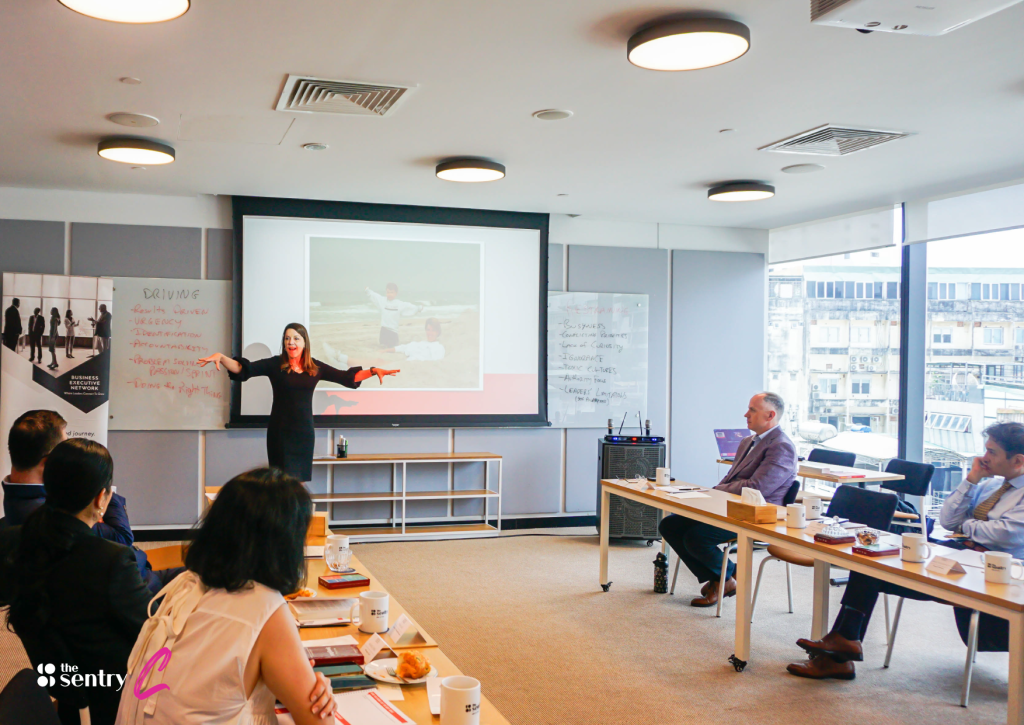
Conference Rooms Are Great for Training Sessions
Training sessions are a great way to onboard new hires and upskill existing employees. However, conducting them effectively in an open office is nearly impossible. A conference room provides the privacy and quiet necessary for learners to concentrate. It also makes scheduling regular training easier, as you do not have to search for a free moment when the main office is quiet.
Conference Rooms Help Companies Grow
When used strategically, conference rooms can be a catalyst for company growth. They are the setting for meetings between managers and their teams to discuss company goals and objectives. By providing a private and comfortable environment for these discussions, employees may feel more empowered to share their thoughts and opinions, leading to better strategies and a stronger company culture.
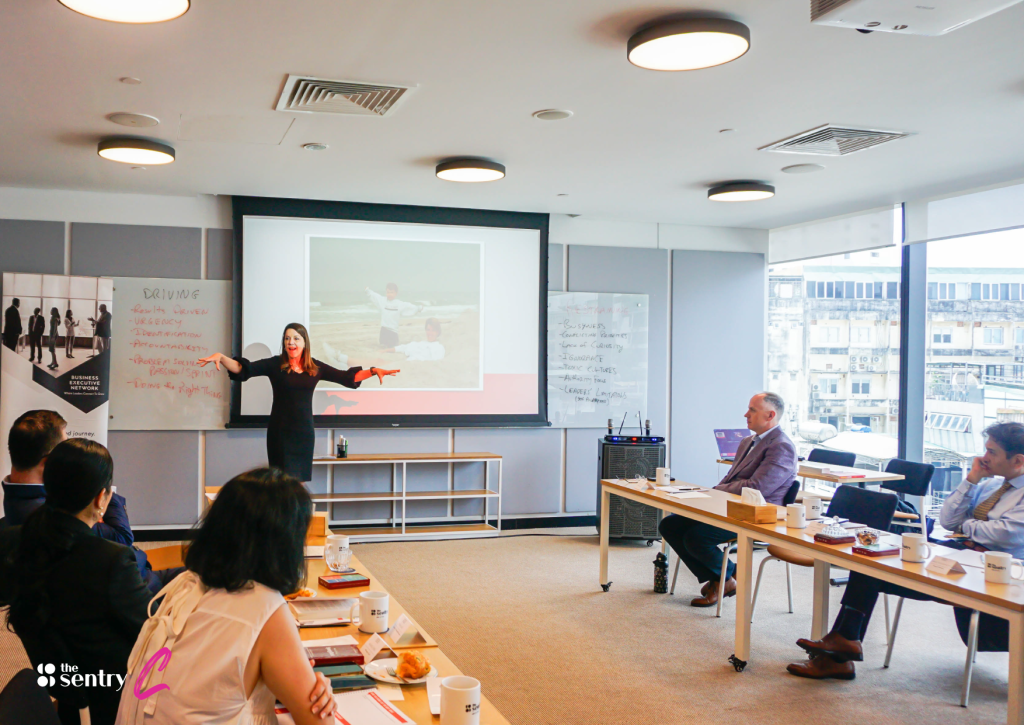
Conference Rooms Offer Flexibility
Because of their versatile nature, conference rooms can be adapted to fit a wide range of needs. You can set up a classic boardroom table for a formal event or rearrange the space for a casual team luncheon. With the ability to add extra tables and chairs, you can easily scale the room to accommodate larger groups as needed. This flexibility makes them a convenient and valuable asset for any business.
How to Find a Conference Room For Your Needs
Finding the right conference room requires some thought. Here are a few factors to consider to ensure you choose a space that works for you.
Size Matters
First, determine the size of the room you need. If you plan to host large meetings regularly, look for a spacious room that you can book consistently. For example, for a weekly meeting with 15 attendees, a room with seating for 20 would provide a comfortable amount of space. If you are only holding small monthly staff meetings, a smaller room that seats eight people comfortably will be more suitable and cost effective.
Location Matters
The location of the conference room is very important. Choose a space that is convenient for all your attendees to travel to. If the location is too far or difficult to reach, it can cause unnecessary stress and may lead to people arriving late, which can negatively impact productivity. An inconvenient location might even discourage employees from attending at all.
Technology Matters
Technology plays a huge role in the effectiveness of a meeting. Some conference rooms come fully equipped with modern tools like video conferencing, wireless internet, and high quality audio visual equipment. If you plan to use these features, make sure to book a room that offers them. If your meetings do not require advanced tech, you can select a simpler space.
Price Matters
While price should not be the only factor in your decision, it is certainly an important one. When comparing the costs of different conference rooms, look beyond the hourly rate. Focus on the overall value. One room might be cheaper, but if another offers better amenities, a more professional aesthetic, and superior comfort, it may be worth the higher price.
Service Matters
Finally, the service provided by the venue is a major consideration. You would not buy a car without checking its safety record, and you should not book a conference room without considering the venue’s reputation. Ask questions about the provider. Look for client testimonials and online reviews to learn about their customer service history and the quality of their facilities. On site support can be particularly valuable if you encounter any technical issues during your meeting.
Find Your Perfect Conference Room at The Sentry
Finding a space that checks all these boxes, from technology and service to location and design, can feel like a difficult search. In Vietnam, businesses looking for premium, reliable, and professional meeting spaces need look no further than The Sentry.
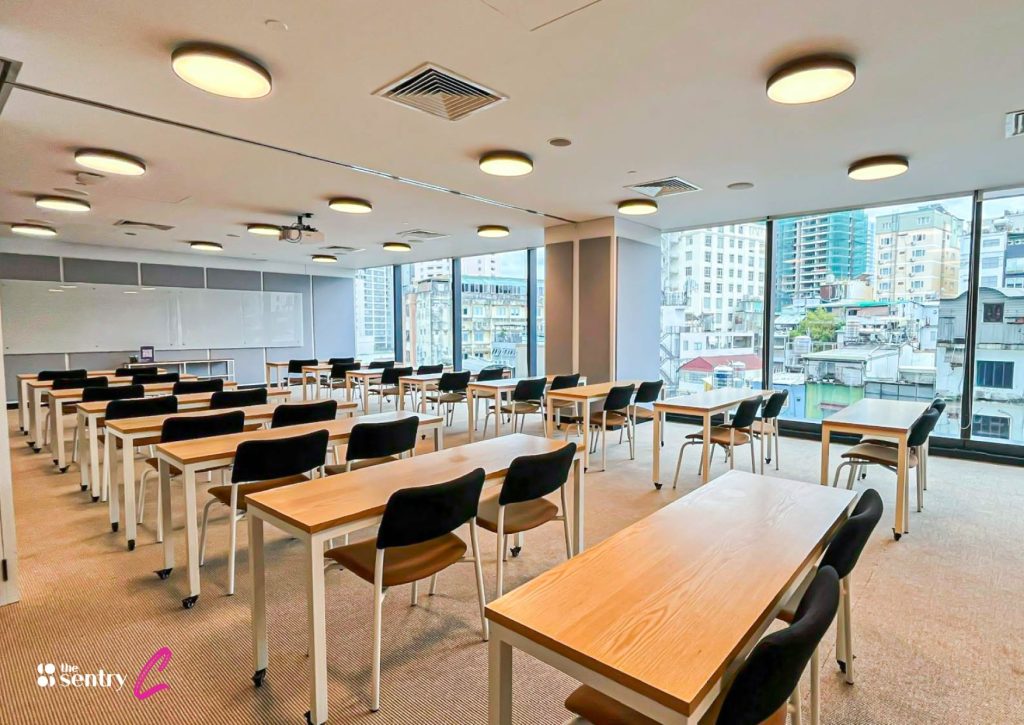
The Sentry understands the needs of modern businesses. We provide beautifully designed, fully equipped conference and meeting rooms that are built for productivity and professionalism. Our Grade A locations in Ho Chi Minh City are convenient and impressive, while our on site support team ensures that every meeting runs smoothly. Whether you need a small room for a private chat or a large, tech enabled boardroom to impress clients, we have a flexible solution for you.
Stop searching and start meeting in a space that elevates your business.
Book a tour today and discover the perfect conference room for your team.
- Phone: +84 969 067 845
- Email: events@thesentry.com.vn
YOU MAY BE ALSO INTERESTED IN
What is Space Management?
Have you ever thought about how the layout of your office affects your work day? Space management is the thoughtful process of organizing a physical environment to help a business achieve its goals. It is about making every square meter count, ensuring the space not only looks good but also functions beautifully for the people […]
What is Diversity and Inclusion in the Workplace?
The conversation about making every employee feel safe and supported at work is always ongoing. In recent years, many businesses have recognized that making diversity and inclusion a central part of their operations is not just a trend but a fundamental aspect of success. We often see large global corporations leading the way with comprehensive […]
How To Motivate Your Employees
Have you ever looked around your office and felt a lack of energy? It happens in every company. People get into a routine, the initial excitement of a job wears off, and productivity can start to dip. As a leader, you know that your company’s success depends entirely on your team. When they are driven […]

Interested in this location?
Complete the form below to book a tour or connect with one of our team members to find out more.
